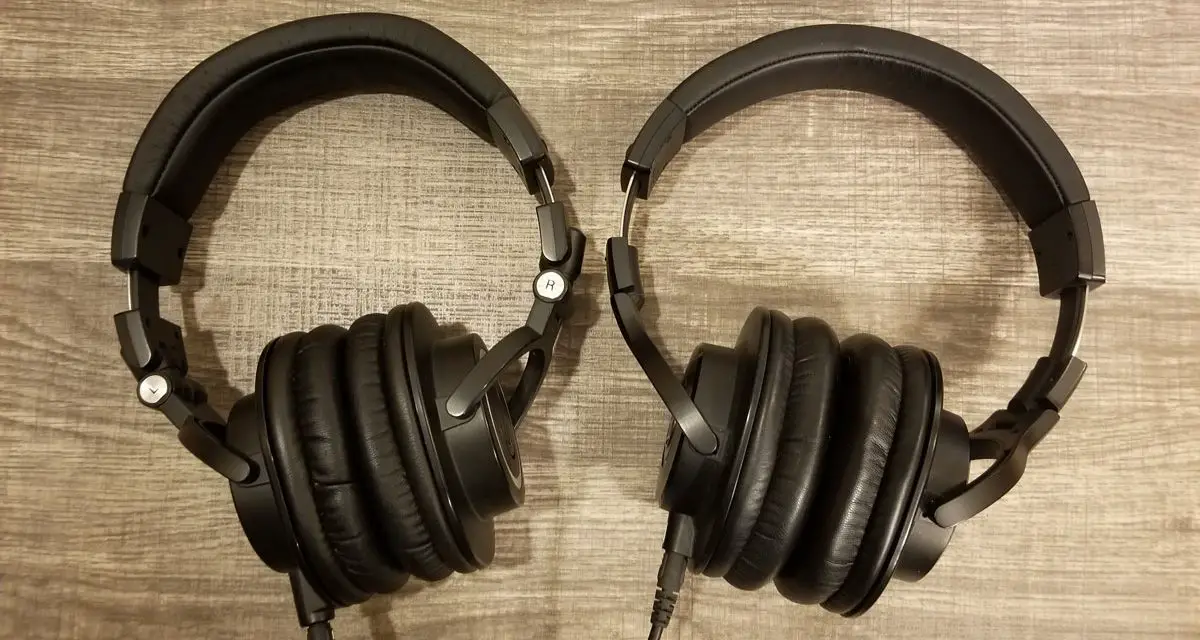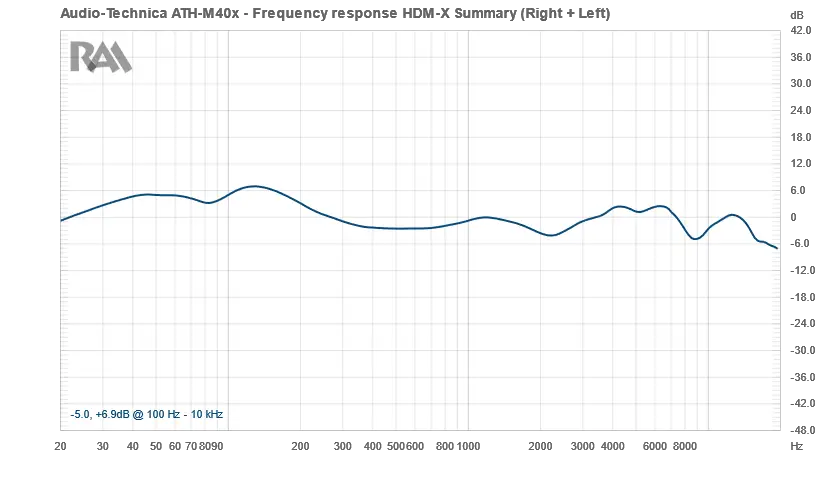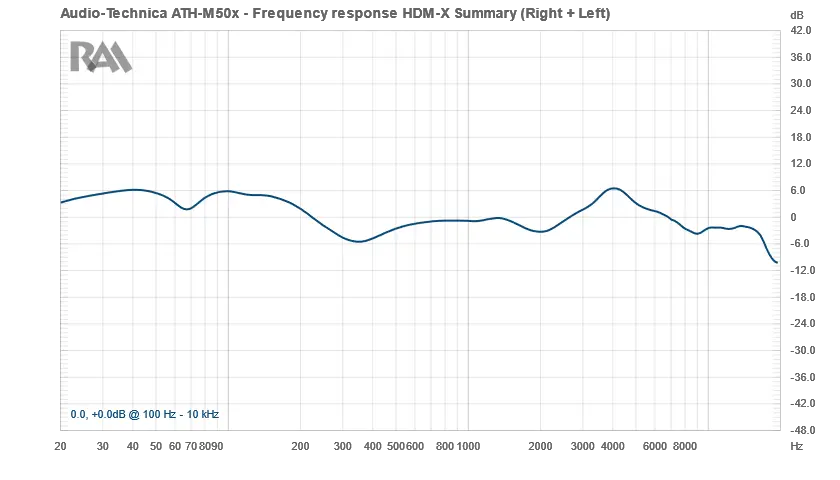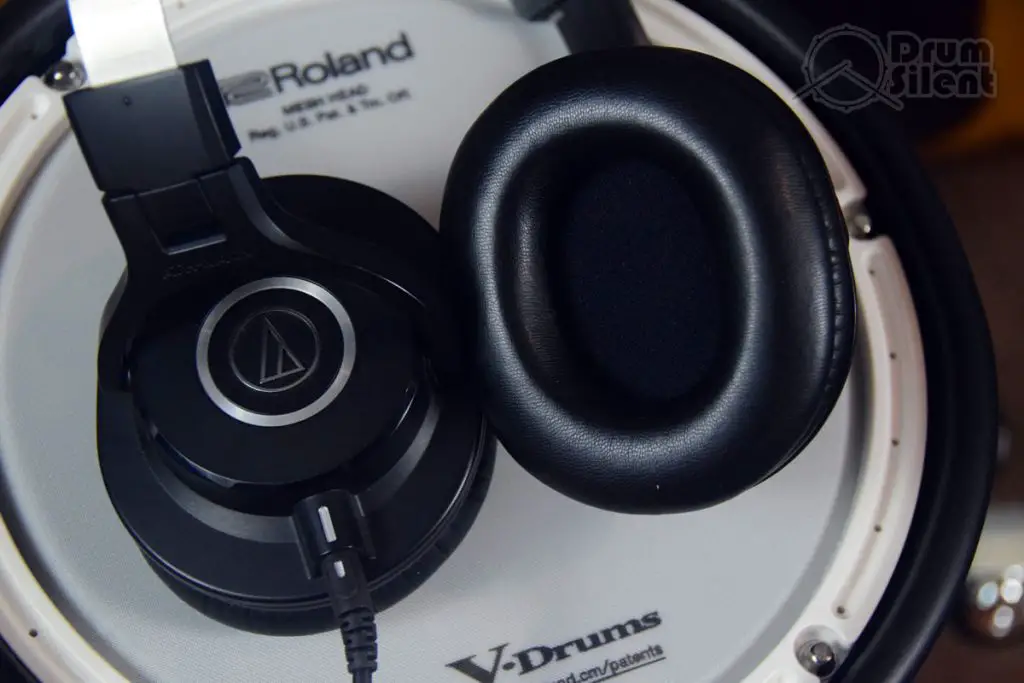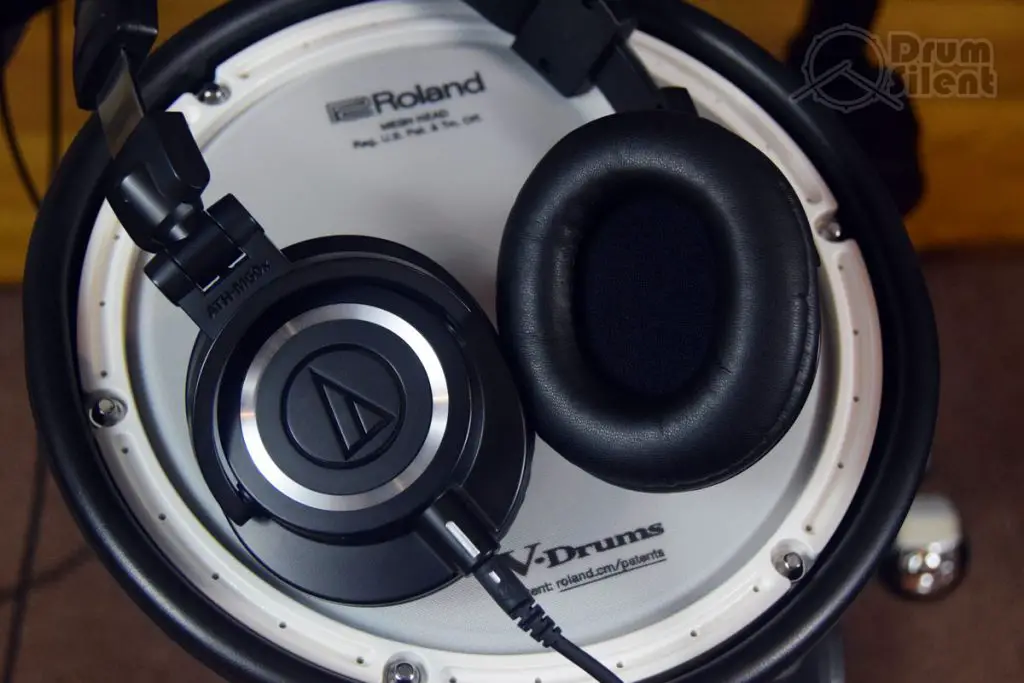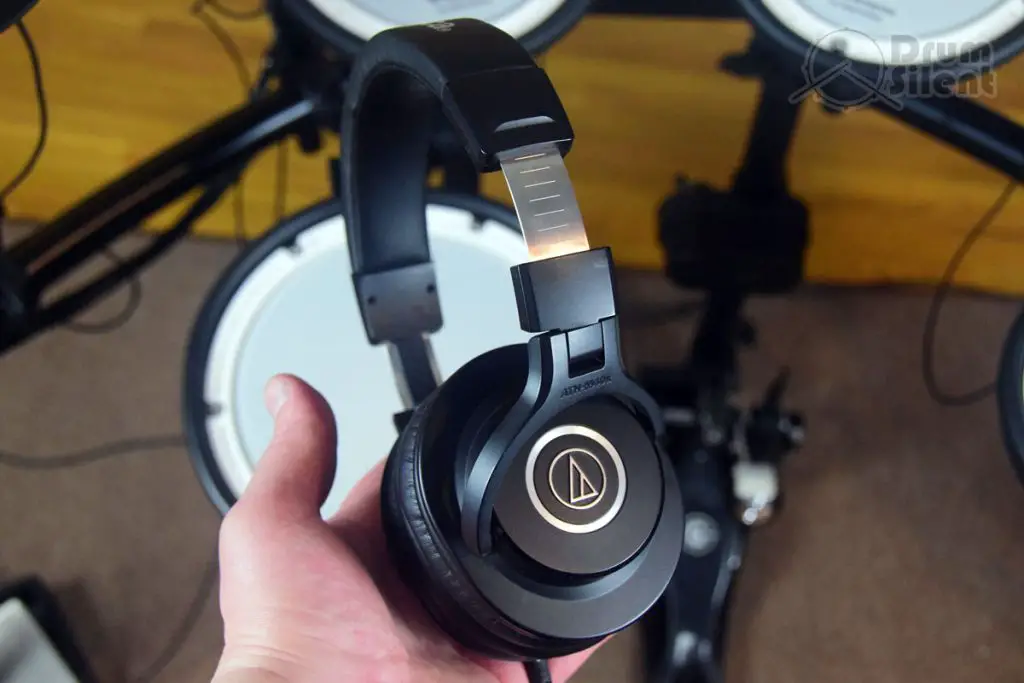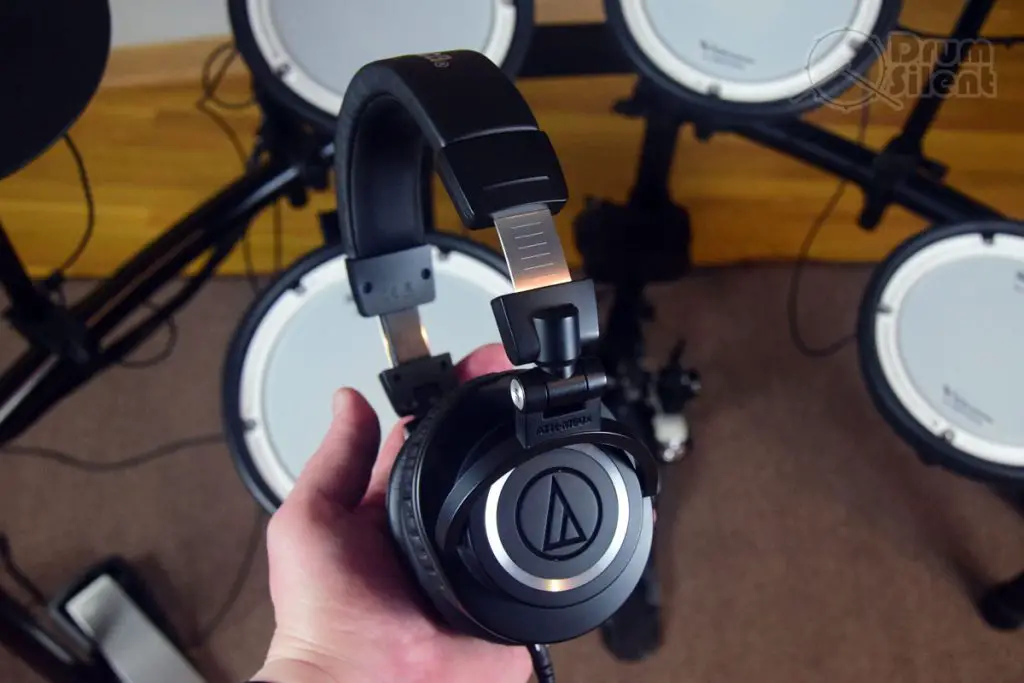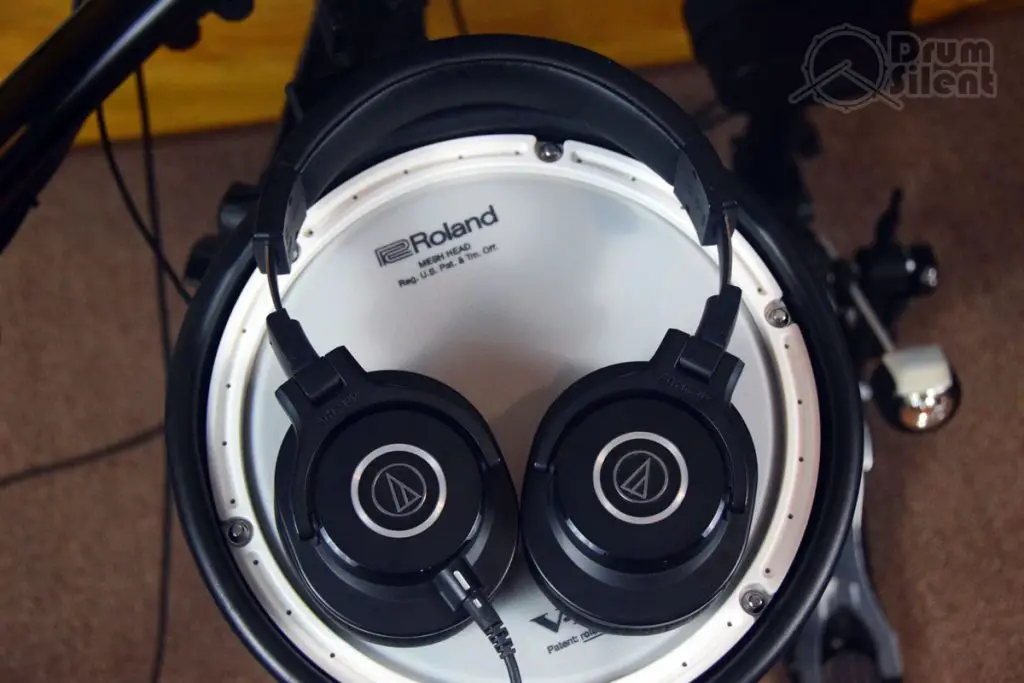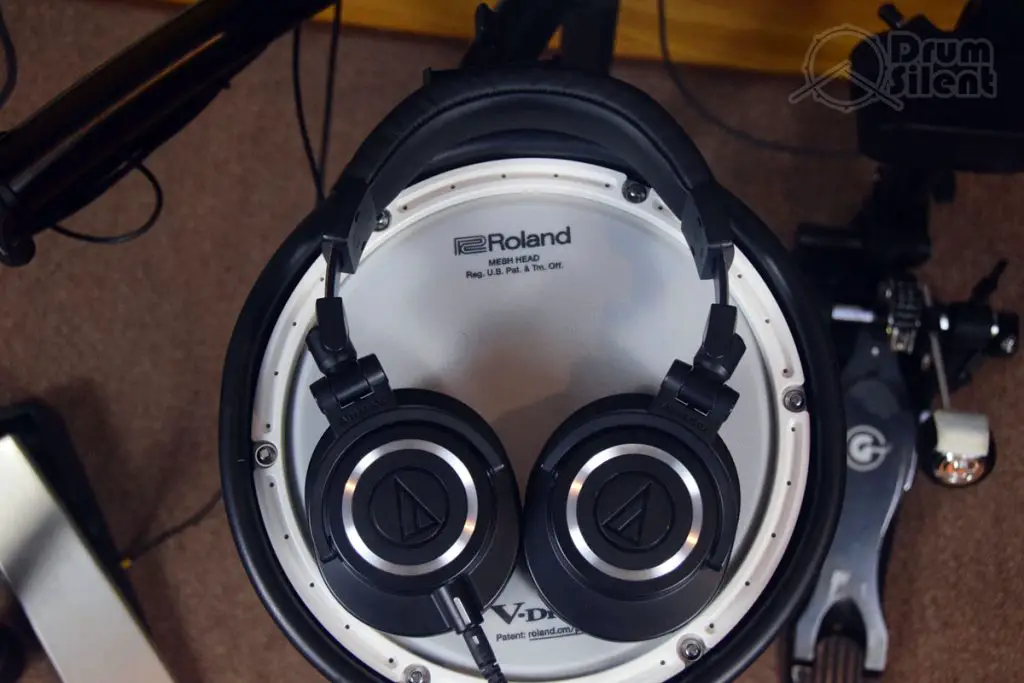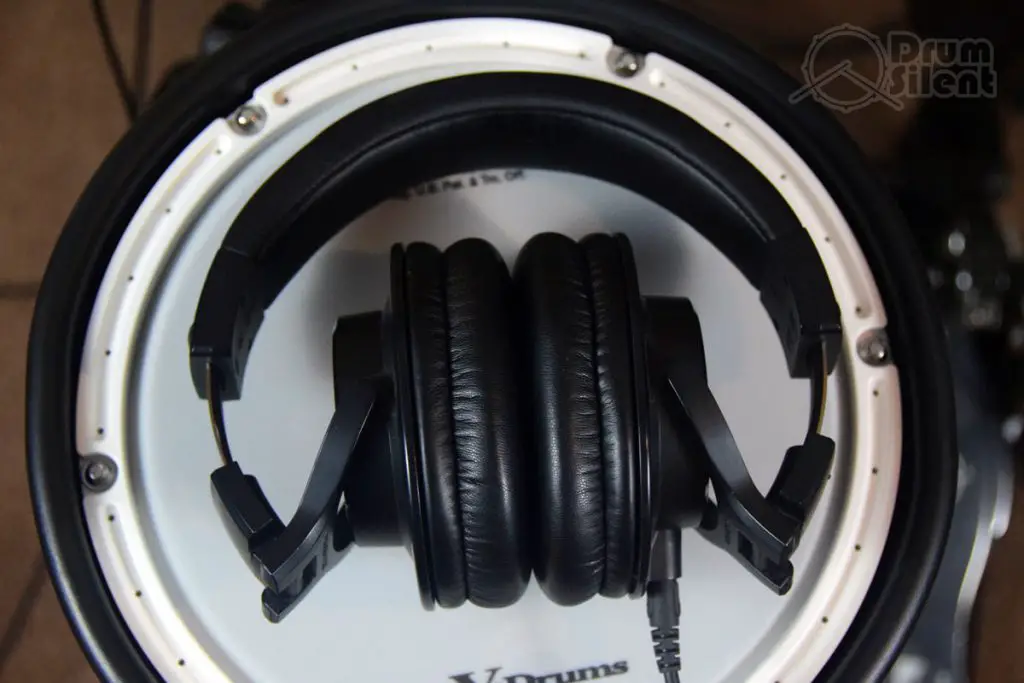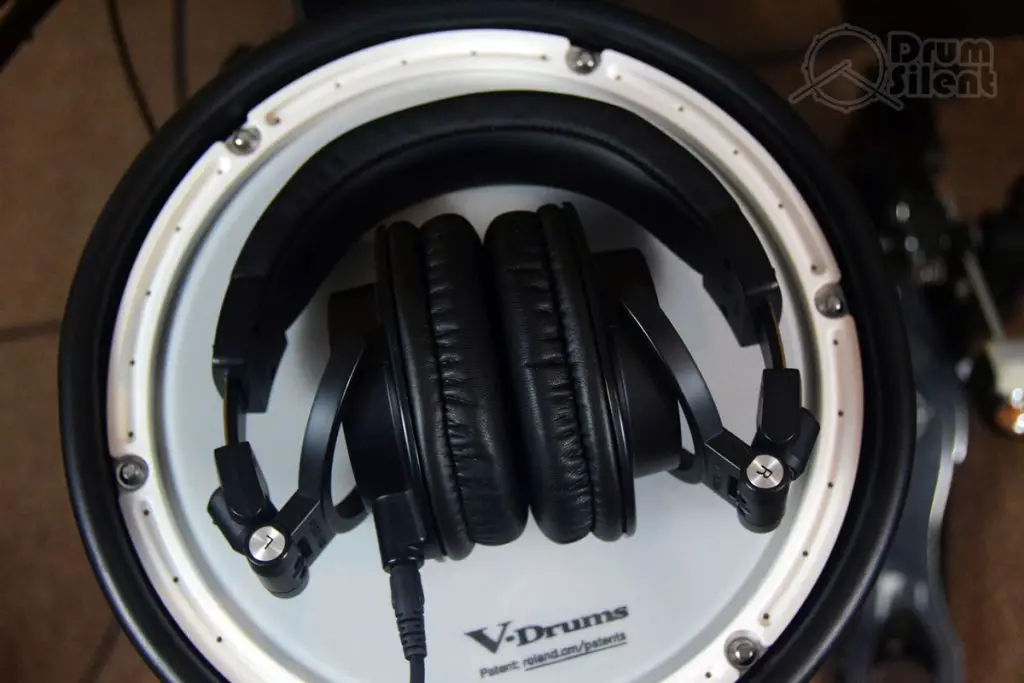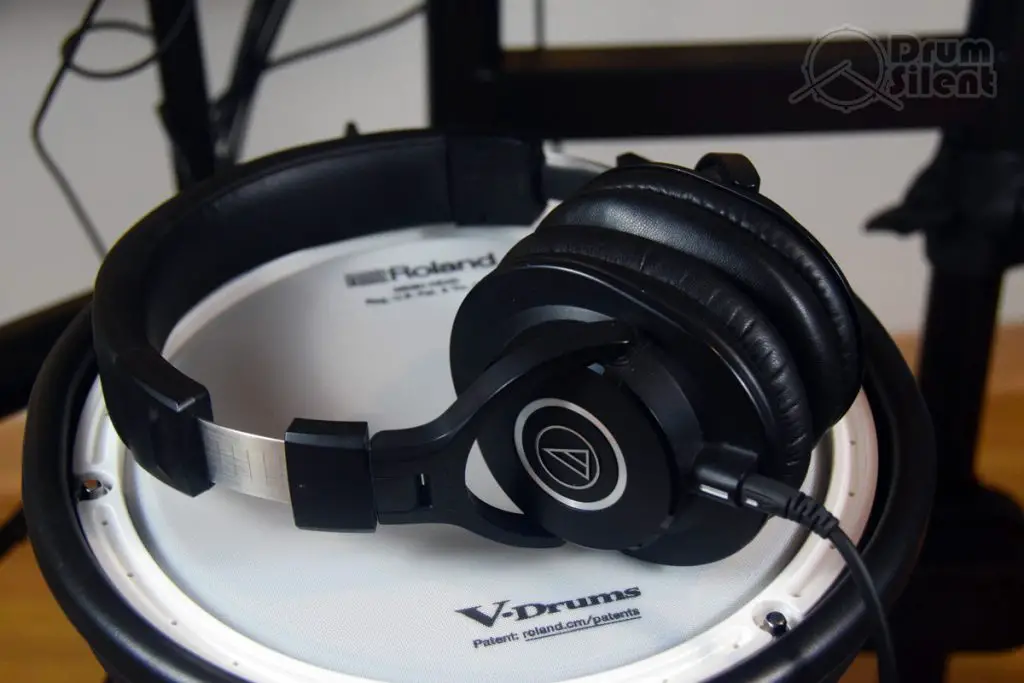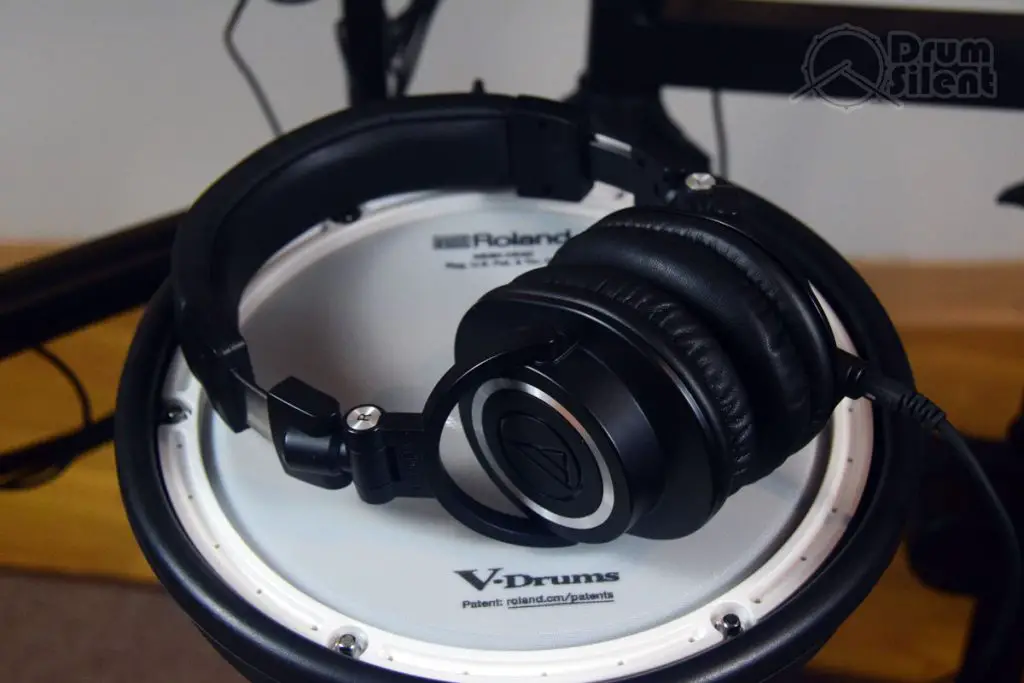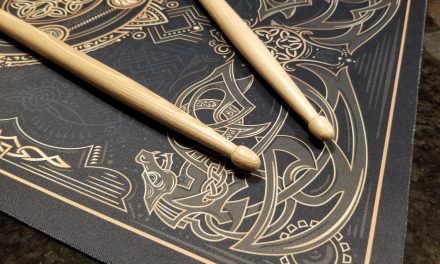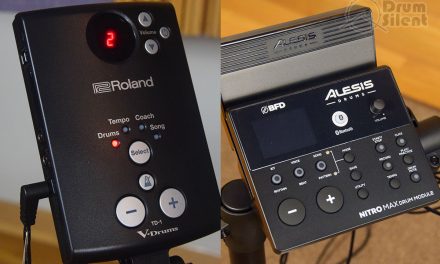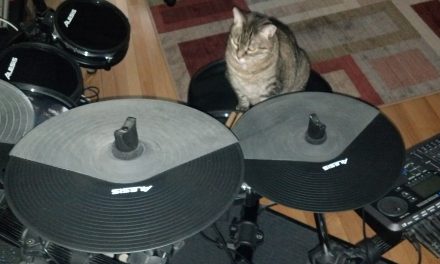Both of the Audio-Technica ATH-M40X and ATH-M50X headphones are popular for different reasons. Depending on what you are looking for in a pair of headphones, one or the other could be more preferable. Let’s take a look at the differences between the two.
Sound Profiles
Both of these headphones will provide a clear, crisp sound for either casual listening purposes or studio usage. They both provide enough clarity and detail to analyze mixes. Let’s take a quick look at the frequency response analysis for each.
Images courtesy of Reference Audio Analyzer
While the frequency response isn’t going to tell us exactly how these are going to sound, it does help paint a picture of what to expect from the balance of the sound throughout the spectrum. In my experience with the both the M40X and M50X, the frequency response analysis looks in line with what I hear.
Highs
As far as the high end goes, both offer good presence there but the M50X sounds a little bit more forward in the lower part of the high end, and can sometimes feel like too much to me when the volume is really cranked up, depending on what you’re listening to.
Examples of things that sound more forward on the M50X would be heavily distorted rhythm guitars, the attack on toms, the snappiness of snare drums, and even some vocals depending on the voice.
The M40X sounds a little more smoothed over and controlled in the high end, which I prefer for mixing. I don’t notice any sweetening or pushed frequencies like with the M50X.
Mids
The mid ranges on both sound pretty similar to me. The biggest difference once again is that spot that sits right between the mids/highs around 4k which sound more forward on the M50x. The lower part of the mids sounds a little warmer to me with the M40X.
Lows
The low end is good on both, but a little different. Both have clear and tight low end, which is great for studio usage or mixing. The M40X feels like it has a little more presence in the low end, but it’s not overly pushed. It helps me hear things like bass guitars, kick drums and sub bass a little better than the M50X.
I also think that it’s possible the M50X feels stronger in the high end due to the lesser presence in the low end, kind of a perception thing.
A little bit of EQ can be used to balance both of these headphones to the point that they sound very similar.
At the end of the day, I like the sound of both. I find that I tend to use the M40X for mixing while I use the M50X for monitoring instruments, when playing electronic drums or for casual listening.
Comfort
As far as comfort goes, I find these to be very similar. I’m able to wear both of these for longer periods of time without discomfort, which I appreciate.
The weight feels about the same while they are on my head, even though the M50X is technically slightly more heavy.
They both have about the same size ear cups and fit over my ears the same. The ear cups on the M40X feel just a little bit deeper and a little more stiff than the M50X, but it’s a minor difference. The headbands feel about the same on both.
Even though both headphones have a snug fit, the M40X feels just slightly tighter on my head.
Build Quality
As far as build quality goes, I also find these to be very similar. They both have similar plastic construction with the only visible metal parts being on adjustment rails on the headband and various screws and pins around the moving parts.
As both of the M50X and M40X age, they start to get a little creaky and I can hear it when I’m moving my jaw while wearing both of these. The M50X seems to be a little more creaky than the M40x, but neither are completely creak-free while I have them on my head.
The padding on the headband and ear cups has held up well for me on both models. I’m not too worried about the ear cups since it’s easy to replace them with aftermarket ear cup pads.
The hinges for the ear cup swivel and collapsing the ear cups feel similar on both. They most likely will wear out over time if you use the hinges and fold them up frequently. I tend to leave my unfolded most of the time and have never run into issues yet myself.
At the end of the day, I don’t see any major differences in build quality between both my M50X and M40X headphones.
Ear Cup Swivel
The ear cups on the M50X can swivel 90 degrees both directions. The ear cups on the M40X can only swivel 90 degrees forward with just a few degrees swivel in the other direction.
Both will work for one-ear monitoring, and both can lay flat to fit around the neck when not in use. I don’t find either to be particularly comfortable when sitting around my neck but the M50X fits a little better since I can lay the ear cups flat against myself instead of pointing them outward. Smaller, skinnier people will find these to fit around the neck in a more comfortable way.
Collapsing & Folding
Both of these headphones can be collapsed for storage or transport. The folding mechanism looks a little different on each, but functions and feels about the same. I’ve heard that people can run into issues with the hinges wearing out over time if they collapse them a lot, so I don’t tend to fold either of them up unless I really need to for some reason. Personally, I haven’t run into any issues with collapsing feature, but I could certainly see it becoming an issue with how they feel when you fold them up.
Cables
The M50X comes with a coiled cable, a 3 meter straight cable and a 1.2 meter straight cable.
The M40X comes with a coiled cable and a 3 meter straight cable.
The M50X includes that shorter straight cable for casual listeners, which is nice. The M40X seems to be packaged with cables that are targeted more for studio specific use or situations where a longer cable is desired.
Both the M40X and M50X have removable, replaceable cables, and the cable type is the same for both. So you can take cables packaged with the M40X and they’ll work on the M50X or vice versa. If you ever run into cable issues you can simply replace the cables and not the entire headset. I haven’t run into any issues with the cables or the cable jacks on either, so that’s good.
Price
Of course we can’t forget to talk about the price. The M50X are more expensive and can be found brand new for around $170. The M40X are less expensive and be found brand new for around $120. On the used market both can be found for around 20-30% of their brand new cost, depending on condition.
Which One Should You Pick Up?
If you’re trying to make a decision between the two, here’s our thoughts.
The M40X is a good pick if you’re looking to primarily use the headphones in a studio and especially for studio mixing. I find them to be good for casual listening as well, but the lack of a shorter cable option for use with a smartphone in your pocket can be a drawback. Since I’m mostly using my headphones in the studio, M40X would be my pick if I could only pick one.
If you don’t mind spending a little more, and plan to use your headphones for more than just studio time, the M50X can be worth the extra cost. They sound just a slight bit more sweetened for casual listening, gaming, movies, etc. while also maintaining a usable sound for in the studio. They also have a shorter cable option which works well for use with a smartphone in your pocket. I also think the M50X will be easier to re-sell due to their popularity.
Hopefully that helps to sort out the details between the two. For this particular comparison, I don’t think you can really go wrong with either if your options are limited.

